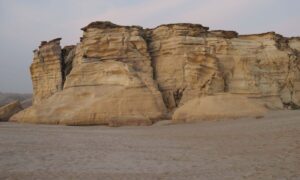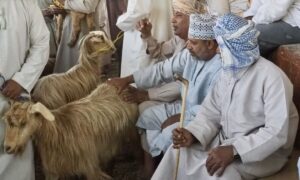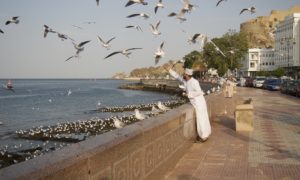If you visit the Grand Mosques in the Middle East you want to look up and look down. Why? To marvel at the magnificent chandeliers and the rugs.
I saw this first hand on a recent trip to the Middle East (Feb. 2020 before the Covid shutdown) when I had a chance to see two of the largest mosques in the world.
Coming from and growing up in the Middle West of the United States, this was a pretty new experience for me. Dazzling actually. I have traveled extensively in Europe and visited major cathedrals in many cities, so I found it interesting to compare these opulent Islam structures of Worship with those in the Western world.
What struck me most were the chandeliers and the rugs.
Being curious, I wanted to understand why they developed as major features in these religious institutions.
The chandeliers seemed to come from the need for light. Muslims pray five times a day and while they don’t have to go to the mosque, many do. The early morning and late in the evening prayer time is when it is dark. The mosques need lighting.

From my reading it appears that over time the chandeliers got fancier and bigger as the mosques got bigger and the builder wanted to show off his wealth. In many cultures chandeliers are a symbol of wealth.
My guess this that the growth of incredibly large and ornate cathedrals were prompted by the same motivation.
And most mosques have a dome, representing heaven. I can see why the designer would insert a gorgeous chandelier in this area. It’s also a way to bring the huge space down to a more human scale. In Christian churches you see the use of banners to accomplish this.
Here are some I saw at the Sheik Zayed Mosque in Abu Dhabi and the enormous mosque built by Sultan Qaboos in Muscat. I’ve also included ones from the newly opened Government Palace in Abu Dhabi—not a mosque but a very grand building.
Rugs in the Middle East
Then there are the stunning rugs. They often have to be enormous because all men are required to attend the Friday noon call to prayer at the mosque, meaning that the great prayer hall needs to be large enough to hold the entire congregation. Obviously if the religious practice doesn’t involve sitting in chairs or pews, but rather on one’s knees, a rug is an important feature.
The one at the Sheik Zayed Grand Mosque in Abu Dhabi is the world’s largest.
Doing a little more reading I discovered that rugs are a significant part of the Middle East and Asian culture, replacing animal skins by early civilizations. Instead of using animal skins for floor coverings, the people sheered animals and wove rugs. It was no longer necessary to kill the animals to have rugs.
Along with protections from the elements, a rug could be come an item of decoration. While hides could be dyed, it was not possible to create intricate designs on them.
It isn’t clear exactly where this practice originated, but it was adopted by many tent-dwelling nomads. It is believed that the knotted pile carpet was created about 600 BC.
Over time the wealthy acquired fancier and bigger rugs.
Here’s the world’s largest hand-knotted carpet at the Grand Mosque in Abu Dhabi. Approximately 1200 artisans were required to make it. This photo doesn’t do the enormous space justice. It can hold 40,000 people at a religious service.
The following are photos showing rugs in typical use in various settings in Oman and the UAE.




The Photo Tour to Oman and Dubai was organized by Jim Cline Photo Tours.

















Comments
7 Commentsmary lockrow
Aug 17, 2020spectacular! 40,000 people on their knees…..spectacular sight I’m sure! Beautiful images and very interesting!
Susan J. Smith
Aug 17, 2020It would be spectacular I’m sure to be there when that prayer hall is full.
leonardo tombelli
Aug 17, 2020Wonderful images! Thank you!
Susan J. Smith
Aug 17, 2020Thank you for your comment.
ann cabezas creed
Aug 17, 2020Beautiful, magnificent! And thank you for sharing the photos
Susan J. Smith
Aug 18, 2020I’m glad you enjoyed.
JEANNE LEWAND
Aug 19, 2020GREAT MEMORIES!